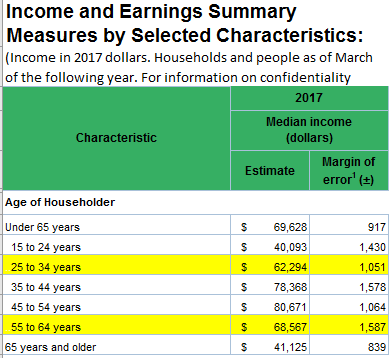
Hot Topics
Why 25-54? It’s time to break this old habit.
August 6, 2019
Adults 25-54 is the most requested demographic group by radio advertisers. Besides the fact that 25-54 is not a demographic group, but a family reunion, why do so many advertisers request 25-54? In a single word – habit. Choosing Adults 25-54 allows advertisers more selection of stations and it therefore gives them tremendous price advantage.
While seldom used, one could argue that Adults 35-64 is a better demographic group for the radio industry. This will be explained later. However, that is not the reason for an advertiser to change its target demo.
So why 35-64?
Let us look at the difference between 25-54 and 35-64. Both demos share ages 35-54. The difference is 25-54 includes 25-34, while 35-64 includes 55-64. Therefore it comes down to a simple question; who is a more likely customer for a particular advertiser, an Adult 25-34 or an Adult 55-64? In many cases, the answer is 55-64. More often than not, the 55-64 year-old has more wealth, income, and buying power than their 25-34 counterparts do.
This comparison can be backed up with research. On a broad scale, one can access demographic characteristics from the U.S. census. According to the 2017 census, 55-64 year-old median household income is 10% higher than their 25-34 year-old counterparts are. Most statistics show that this difference is even larger when you examine wealth.
While this data is available for free, there are many advantages to using local market qualitative (i.e., Scarborough, The Media Audit, or others). First, it is local and reflects the unique characteristics of your market. More importantly, you can look at specific lifestyle and product consumption categories. Look at your market and see who is more likely to be planning to spend $30,000 or more on a new car, Adults 25-34 or 55-64.
Finally, many advertisers will agree that the wealth and buying power is in the older demo cells. However, they have already established their brand loyalty. As a 55-64 year-old myself, my brand loyalty is no stronger than my 25-34 year-old children, and I can afford numerous products and services that they cannot.
Switching this demo is good for many advertisers. So why is this good for radio? Again, it comes down to the difference between 25-54 and 35-64 – or simpler, the difference between 25-34 and 55-64. In most markets, 55-64 year-olds are heavier listeners to radio compared to 25-34 year-olds. More listening results in more market rating points. More ratings points should result in more revenue.
If you’d like more information on this topic, please feel free to reach out to me at CSislen@ResearchDirectorInc.com or 410-956-0363.
-Charlie Sislen, Partner

Comments